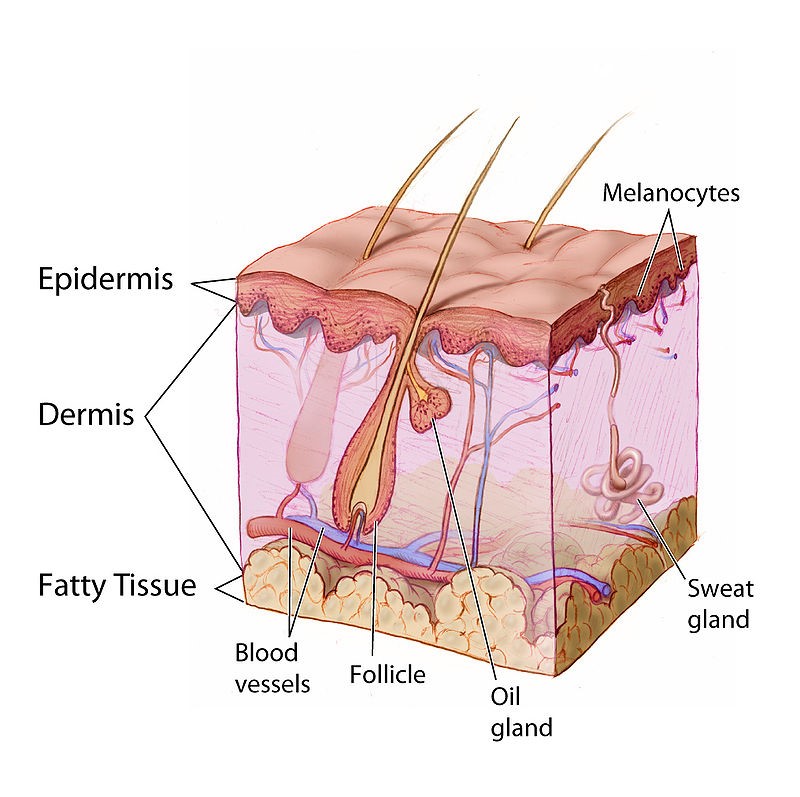Overview and Function
The integumentary system is composed of the skin and its accessory structures The accessory structures include the hair, nails, sweat glands, and oil glands. . The skin is the largest organ of the body with a surface area of 1-2 square meters and comprising about 15% of total body weight.
The skin is made of multiple layers of cells and tissues, which are secured to underlying structures by connective tissue. In this image, you can see all the accessory structures except for the nails. The skin contains three layers: epidermis, dermis, and hypodermis (a fatty layer also called the subcutaneous layer).
The skin cells of the epidermis are produced in the deepest epidermal layer, which takes 4-6 weeks to migrate to the surface and be sloughed off as a dead cell. Most cell types of the skin are keratinocytes.

Integumentary System Functions
The integumentary system serves many functions to include the following:
- protection,
- thermoregulation,
- sensation,
- vitamin D synthesis,
- secretion and excretion,
- immunity, and
- growth.
Protection
The integumentary system protects against physical and mechanical damage through the elastic qualities of the proteins: keratin, collagen, and elastin. It also protects against the entrance of pathogenic organisms, dehydration, and UV radiation through the action of melanocytes melanin-producing cells located in the bottom layer of the skin's epidermis. producing melanin the pigment responsible for skin color. .
Thermoregulation
The skin plays a role in keeping body temperature at 98.6 degrees Fahrenheit.
When the body is hot, vessels in the dermis expand, exposing them more to the surface where they can radiate excess heat.
However, when the body is cold, vessels in the dermis constrict, which helps retain heat within the body.
In addition, liquid sweat expelled from sweat glands cools the body as it evaporates. Sweating is also a way to get rid of some wastes produced in the body.
Sensation
The skin has many sensory receptors for sensing pressure, pain, and temperature.
Vitamin D Synthesis
The pre-vitamin D molecule is found primarily in the keratinocytes of the basale layer of the epidermis. That molecule is converted to vitamin D3 when exposed to energy in UV light. Vitamin D3 is then released into the blood. Vitamin D regulates the amount of calcium and phosphate ions in the blood. Children with prolonged vitamin D deficiency develop a disease called rickets softening and weakening of bones .
Secretion and Excretion
Secretion and excretion removes water and wastes (urea and salts) through sweat; this is released through the sweat pores.
Immunity
Immunity functions through the Langerhans cells cells playing a role in immunity functioning as antigen-presenting cells, which engulf microbial agents and present their antigen to the cells of the immune system for destruction.
Growth
Skin has the ability to expand due to the elastin protein fibers found within it.
